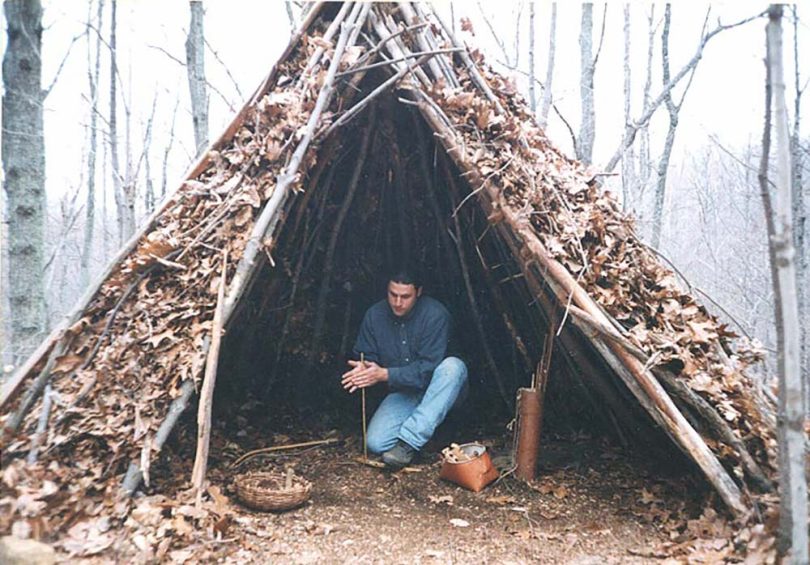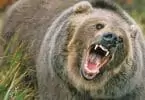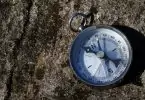Suppose you are brave and adventurous enough to want to venture into the outdoors for a few days at a time, with nothing but your camping gear on your back. In that case, there are some essential survival tactics you should learn to give you the best chance of having a safe and enjoyable experience.
Outdoor survival skills are crucial to a safe hiking trip into areas you are not familiar with, especially when you might be battling extreme changes in terrain and weather. We’ve pulled together a hiking essentials checklist so you can make sure beforehand you have mastered all the skills necessary and you have the correct tools to better ensure your safety and survival.
Basic Outdoor Survival Skills
1. Make a Spear
A spear can be extremely helpful if you need to anchor any belongings or findings to the ground, or if you want to catch any fish or animals to cook and eat while you are outdoors. A D2 Steel foldable pocket knife from Bastion Gear should be at the top of your survival gear list. You can use this to whittle a good stick into a spear that you can carry with you on your adventure.
Here’s how to make your own spear using a good stick and a robust hiking knife.

Source: ravencresttactical.com
– Find a good, sturdy stick, ideally straight. If it’s fishing you need to use it for, try to find a nice long one. Make sure it isn’t too old as older sticks may have some decay and can be less robust
– Hold the stick firm with the end you want to whittle pointing away from your body
– Angle your knife so the sharp end of the blade is facing away from you, and push it down the end of the stick, shaving off a layer of the wood
– Rotate the stick and continue to shave off layers of the wood all the way around until you achieve a nice sharp point at the end of the stick
– Keep your knife sharp by drawing the blade across a rock several times to keep it nice and thin
2. Harvest Vegetation
Another useful skill you will need a good quality knife for is harvesting vegetation to eat and use in other survival activities. Make sure you know beforehand the kind of vegetation you might find on your trip that is safe to eat. You can also use leaves, foliage, and grasses to insulate your camping area, cushion your sleeping bag, and as kindling for the fire, so having a knife handy to collect it is extremely useful.
– Make sure the vegetation is safe to consume and handle before attempting to harvest it
– Hold the vegetation outstretched from its base, making it taut, then use a sharp knife to slice the stalk or stick. Try to avoid hacking or sawing at the vegetation. If you struggle to sever it, try sharpening your knife against a rock first.
3. Light a Fire

Source: hiconsumption.com
The ability to light a fire is an extremely useful skill to have. You can purchase easy fire-lighting kits, but if you are traveling for a number of days and don’t want to carry additional tools, or you run out of them if the weather takes an unexpected turn for the worse, it’s useful to know how to light a fire without a kit.
– Even if you can’t take a fire-lighting kit, try to carry some waterproof matches—they could make your life a LOT easier when it comes to fire-lighting
– Choose wood and vegetation that is as dry as possible. Look in shaded areas but avoid undergrowth as that can be damp from the ground moisture
– If you have a magnifying glass and an unobstructed view of the sun, you can place the glass in front of dry vegetation and wait for the smoke, then blow on it gently to produce a flame
– To create fire using friction only, make a v-shaped notch in a block of wood and insert a stick (or spindle). Rub the spindle between your hands very quickly until it begins to smoke, then use gathered tinder to turn the smoke or spark into a flame
4. Find Water
Finding water that is clean enough to drink is one of the most important survival skills you could master. Water filter products are readily available and easy to carry around, but sometimes it’s finding the water in order to filter it that is the challenge. Try the following places to collect your water:

Source: twitter.com
– Rain. Rainwater is an obvious way to get water. Use either a foldable water collector or create basins using wood and vegetation to collect the water. Likewise with any streams or ponds.
– Snow. Make sure you melt the snow before attempting to drink it as it can take more time and energy to consume it in frozen form. You can melt the snow more quickly by warming it over a fire, or by placing it into a bag, breaking it up, and either leaving it out in the sun or heating it up against your body.
– If you run out of water filter products, always try to boil the water before you drink it, as that can help to remove pathogens from the water.
5. Make a Shelter
Sometimes a camping tent, especially the small, compact ones that are easier to take on long hiking trips, is not always enough to protect you sufficiently from unexpected changes in temperature and the elements. Having the skills to build an effective shelter quickly can help protect you from hypothermia and other consequences of exposure to extreme outdoor conditions.
– Don’t assume your shelter needs to be large. It is often the case that smaller is better, especially when the temperatures are shallow and you need to keep warm. All you really need is a shelter that accommodates your body size.
– Use the natural elements around you as a framework, such as fallen branches and logs, rocks, and large, overhanging trees.
– Use sticks, stones, and foliage to close up any exposed sides, then pack the shelter with insulation. Nature provides this in abundance. Think leaves, grass, moss, sticks, bark, and pine needles. The more elements to your layers, the more warmth can be trapped inside your shelter.

Source: popsci.com
Finally, don’t forget to take a sturdy pen with you so you can keep track of where you’ve trekked and any essential discoveries you’ve made along the way. An EDC Pens in either stainless steel or lighter weight, equally robust metal such as aluminum, is ideal. Now that you have all the necessary skills and tools, all that’s left to do is enjoy yourself!







